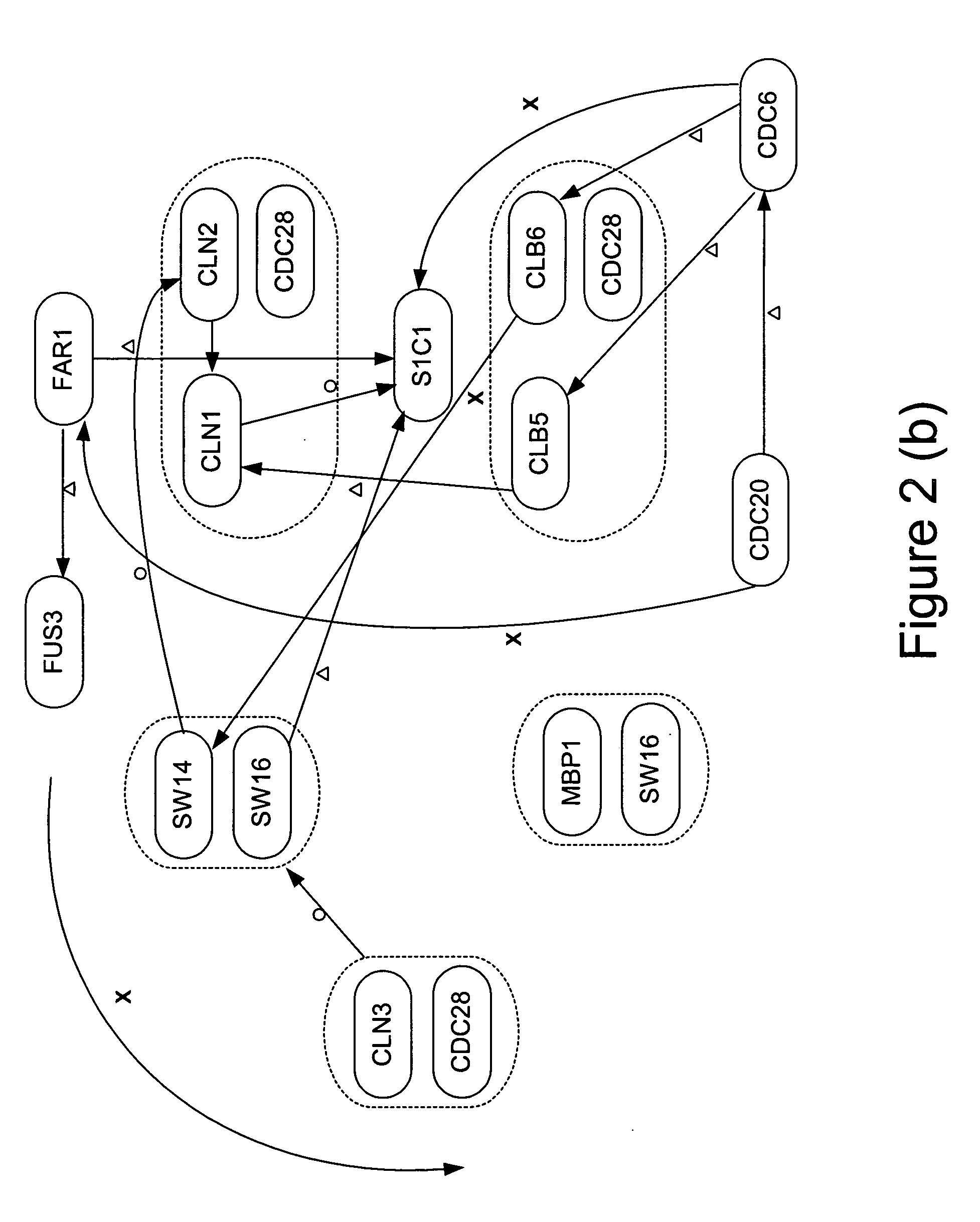Nonlinear modeling of gene networks from time series gene expression data
a gene expression and time series technology, applied in computing models, probabilistic networks, instruments, etc., can solve the problems of many genes, difficult to understand the cause and effect relationships of genes in such studies, and independent regulation
- Summary
- Abstract
- Description
- Claims
- Application Information
AI Technical Summary
Problems solved by technology
Method used
Image
Examples
example 1
Bayesian Network and Nonparametric Regression
Suppose that we have an n×p microarray gene expression data matrix X, where n and p are the numbers of microarrays and genes, respectively. Usually, the number of genes p is much larger than the number of microarrays, n. In the estimation of a gene network based on the Bayesian network, a gene is considered as a random variable. When we model a gene network by using statistical models described by the density or probability function, the statistical model should include p random variables. However, we have only n samples and n is usually much smaller than p. In such case, the inference of the model is quite difficult or impossible, because the model has many parameters and the number of samples is not enough for estimating the parameters. The Bayesian network model has been advocated in such modeling.
In the context of the dynamic Bayesian network, we consider the time series data and the ith column vector xi of X corresponds to the st...
example 2
Derivation of a Criterion for Selecting a Network
The dynamic Bayesian network and nonparametric regression model introduced in the previous section can be constructed when we fic the network structure and estimated by a suitable procedure. However, the gene network is generally unknown and we should estimate an optimal network based on the data. This problem can be viewed as a statistical model selection problem (see e.g., Akaike [1]; Konishi and Kitagawa [17]; Burnham and Anderson [4]; Konishi [16]). We solve this problem from the Bayesian statistical approach and derive a criterion for evaluating the goodness of the dynamic Bayesian network and nonparametric regression model.
Let π(θG|λ) be a prior distribution on the parameter θG in the dynamic Bayesian network and nonparametric regression model and let log π(θG|λ)=O(n). The marginal likelihood can be represented as
∫f(x11, . . . , xnp; θG)π(θG|λ)dθG.
Thus, when the data is given, the posterior probability of the network G is...
example 3
Estimation of a Gene Network
In this section, we show a concrete strategy for estimating a gene network from cDNA microarray time series gene expression data.
We use the basis function approach for constructing the smooth function mjk(•) described in Section 2. In this paper we use B-splines (de Boor [7]) as the basis functions. De Boor's algorithm (de Boor [7], Chapter 10, p.130 (3)) is a useful method for computing B-splines of any degree. We use 20 B-splines with equidistance knots (see also, Dierckx [10]; Eiler and Marx [11] for the details of B-spline).
3.2 Prior Distribution on the Parameter in the Model
For the prior distribution on the parameter θG, suppose that the parameter vectors θj are independent one another, the prior distribution can then be decomposed as π(θG|λ)=Πj=1pπj(θj|λj). Suppose that the prior distribution πj(θj|λj) is factorized as πj(θj|λj)=Πl<1qjπjk(γjk|λjk), where λjk are hyper parameters. We use a singular Mjk variate...
PUM
 Login to View More
Login to View More Abstract
Description
Claims
Application Information
 Login to View More
Login to View More - R&D
- Intellectual Property
- Life Sciences
- Materials
- Tech Scout
- Unparalleled Data Quality
- Higher Quality Content
- 60% Fewer Hallucinations
Browse by: Latest US Patents, China's latest patents, Technical Efficacy Thesaurus, Application Domain, Technology Topic, Popular Technical Reports.
© 2025 PatSnap. All rights reserved.Legal|Privacy policy|Modern Slavery Act Transparency Statement|Sitemap|About US| Contact US: help@patsnap.com



